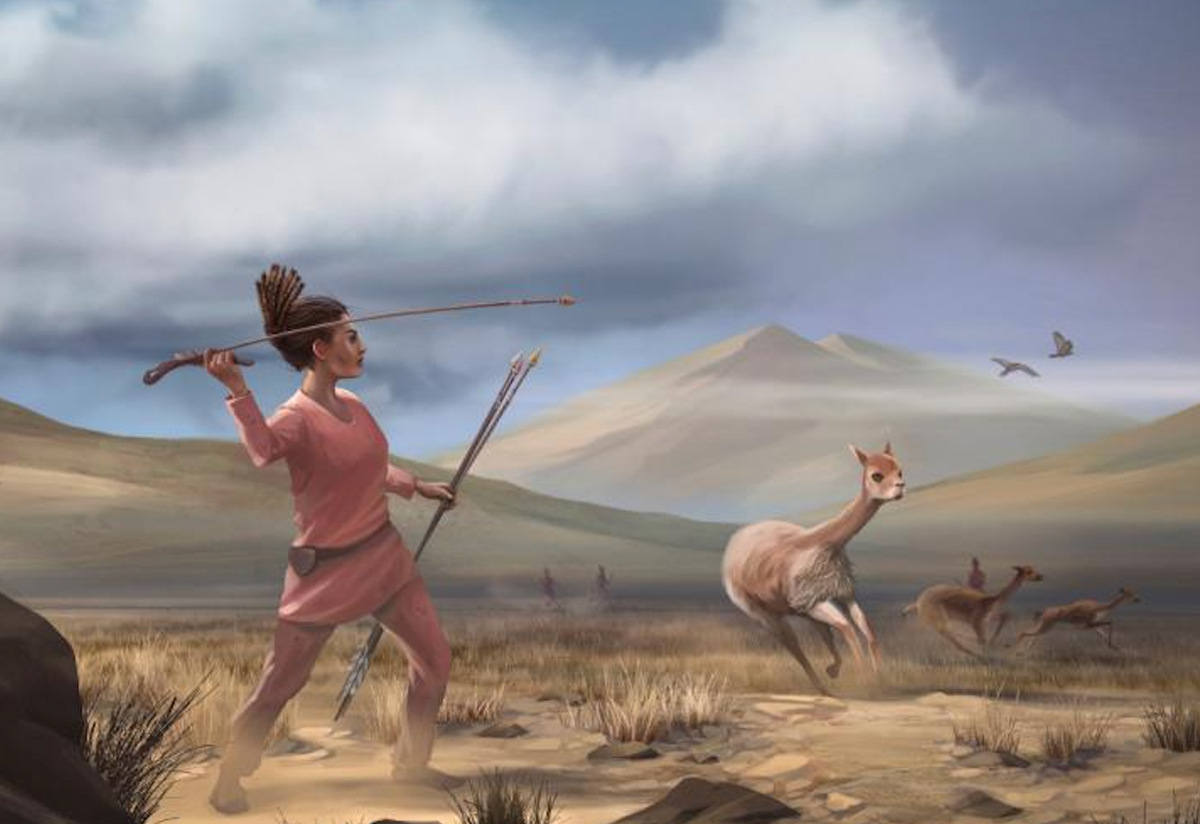
Prehistoric women frequently engaged in hunting as much as men and their anatomy also made them better suited for it, suggests a new review of studies.
For decades, historians and anthropologists have held the popular view that prehistoric men were hunters while women from these times played their roles in groups as gatherers.
Popular culture has also spread portrayals of men as hunters with spears in hand, accompanied by women with babies strapped to their backs and carrying baskets.
But a growing body of evidence has suggested many of these conceptions about early women and men are not accurate.
Prehistoric women not only engaged in the practice of hunting, but their female anatomy and biology likely made them intrinsically better suited for it, revealed two new studies.
One study assessing the physiology of prehistoric women from fossil remains suggested they were capable of performing the arduous physical task of hunting prey and could likely hunt successfully “over prolonged periods of time”.
Researchers found the female body was better suited for endurance activity “which would have been critical in early hunting because they would have had to run the animals down into exhaustion before actually going in for the kill”.
Scientists said the hormones oestrogen and adiponectin – typically present in higher quantities in female bodies – play a key role in enabling women to modulate glucose and fat, which is critical for athletic performance.
Citing an example, they said oestrogen, which plays an important role in fat metabolism, helps women keep going longer and can delay fatigue.
Wider hip structures also enabled women to rotate their hips and lengthen their steps, said scientists.
“The longer steps you can take, the ‘cheaper’ they are metabolically, and the farther you can get, faster,” they said.
“When you look at human physiology this way, you can think of women as the marathon runners versus men as the powerlifters,” said study co-author Cara Ocobock, from the University of Notre Dame in the US.
Studying early human fossils, scientists identified a number of traumatic injuries similar to those received by modern-day rodeo clowns. The injuries were found on the head and chest, similar to when one is kicked by an animal.
They found the rate and patterns of these injuries and wear and tear were equal for both prehistoric women and men.
“As such, we find that both males and females have the same resulting injuries when we look at their fossil records,” said Dr Ocobock.
“So they were both participating in ambush-style hunting of large game animals,” she said.
Researchers have also unearthed in recent times remains of early women hunters who lived about 9,000 years ago in Peru and were buried with their hunting weapons.
“You don’t often get buried with something unless it was important to you or was something that you used frequently in your life,” said Dr Ocobock.
Research also indicates prehistoric women likely did not abandon hunting while pregnant, breastfeeding or carrying children.
“Nor do we see in the deep past any indication that a strict sexual division of labour existed,” scientists said.
“There weren’t enough people living in groups to be specialised in different tasks. Everyone had to be a generalist to survive,” explained Dr Ocobock.
The two new studies were published in the journal American Anthropologist.







